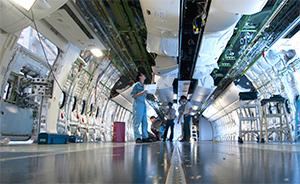Top-Tier OEMs, Suppliers See Slow Aftermarket Recovery

Credit: Boeing
Top-tier manufacturers and suppliers are not banking on a quick commercial aftermarket rebound, financial figures and commentary from 2020 third-quarter (Q3) earnings calls underscore. “I don’t expect we’re going to see an upturn in aftermarket until sometime next year,” Raytheon Technologies CEO...
Subscription Required
This content requires a subscription to one of the Aviation Week Intelligence Network (AWIN) bundles.
Schedule a demo today to find out how you can access this content and similar content related to your area of the global aviation industry.
Already an AWIN subscriber? Login
Did you know? Aviation Week has won top honors multiple times in the Jesse H. Neal National Business Journalism Awards, the business-to-business media equivalent of the Pulitzer Prizes.

